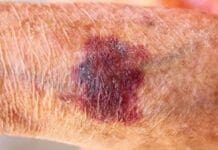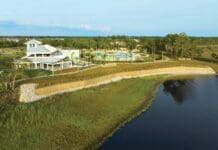By Eddie Summers, Operations Team Leader, Beach Mosquito Control District
Most people are aware of mosquito control spray trucks. These trucks drive around at night, spraying to control adult mosquitoes. It is clear what the mosquito control technicians are doing during these night missions. What exactly do these technicians do during the day?
Mosquito control goes well beyond spraying mosquitoes with an adulticide spray truck. During the day, mosquito control technicians are out in the district looking for the juvenile stages of the winged menaces. Mosquitoes have four life stages. The four life stages are egg, larvae, pupae and adult. It is the larvae and pupae the technicians are hunting and controlling during the day.
Mosquito control technicians look at their computer database and go to each GPS-logged environment to conduct inspections by taking samples, or “dips.” The techs also survey other areas that are not presently geocoded. They inspect these areas, and if they are breeding, or have the potential to breed mosquitoes, they add it to Beach Mosquito Control’s habitat database. Each breeding habitat is inspected from one to three times each month. The frequency of inspections is dependent on the amount of rainfall in each area, as well as the conditions of the habitat post-rainfall. These habitats include roadside ditches, retention & detention ponds, swamps, swales, low areas in the landscape, temporary flood areas, derelict swimming pools and catch basins.
There are over 6100 habitat locations in the district that are geocoded and inspected regularly. Aside from these locations, the technicians also respond to service requests from the citizens of the district.
Contrary to popular belief, developing unoccupied land does not decrease the amount of mosquito breeding habitats. Often, the development of new areas produces breeding habitats as a direct result of stormwater management. New retention and detention ponds are created. New ditches are created. Catch basins, also called storm drains, are created. The majority of the 6100-plus habitats geocoded by Beach Mosquito Control consists of catch basins. Two of the species of mosquito that breed in catch basins and are of public health concern are the Culex quinquefasciatus, also known as the “Southern house mosquito” and the Aedes albopictus, also known as the “Asian tiger mosquito.” The Culex quinquefasciatus is a vector for West Nile virus, as well as St. Louis Encephalitis. The Aedes albopictus is a vector for chikungunya virus, dengue virus, dirofilariasis (dog heartworm), as well as Zika virus.
To help with the prevention of the many viruses mosquitoes can carry, as well as improve the quality of life for the citizens and visitors of the “World’s Most Beautiful Beaches”, Beach Mosquito Control District technicians are out and about during the day, diligently searching for “nature’s vampires” and stopping them where they breed. These daytime operations are extremely effective, and reduce the need for nighttime adulticide spray operations. The focused efforts of Beach Mosquito’s technicians are a testament to the district’s mission and the result shows that they believe in what they do.





















































